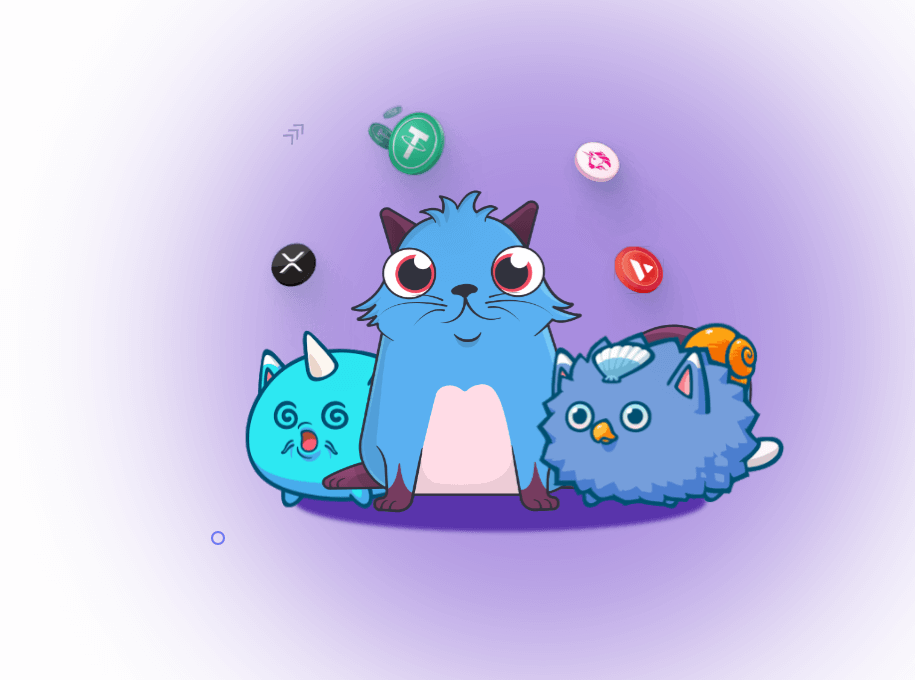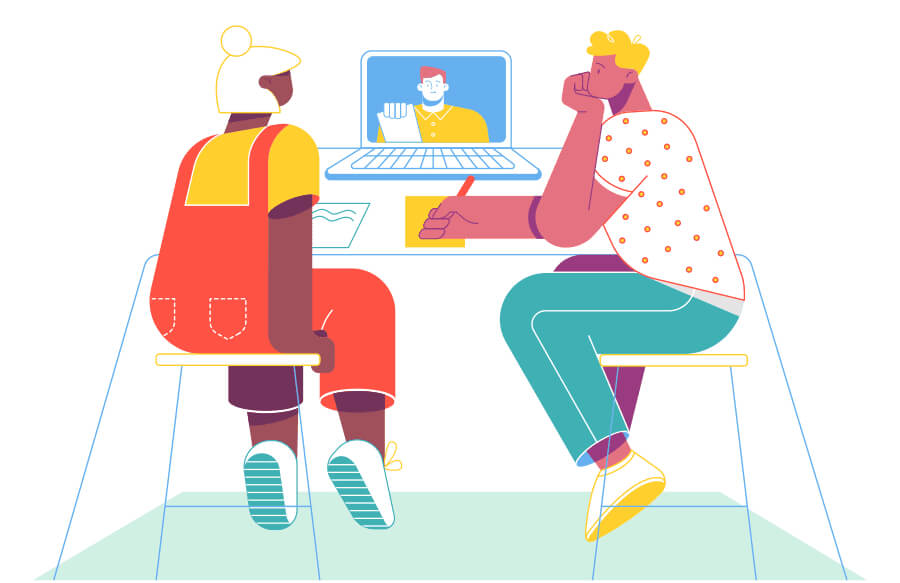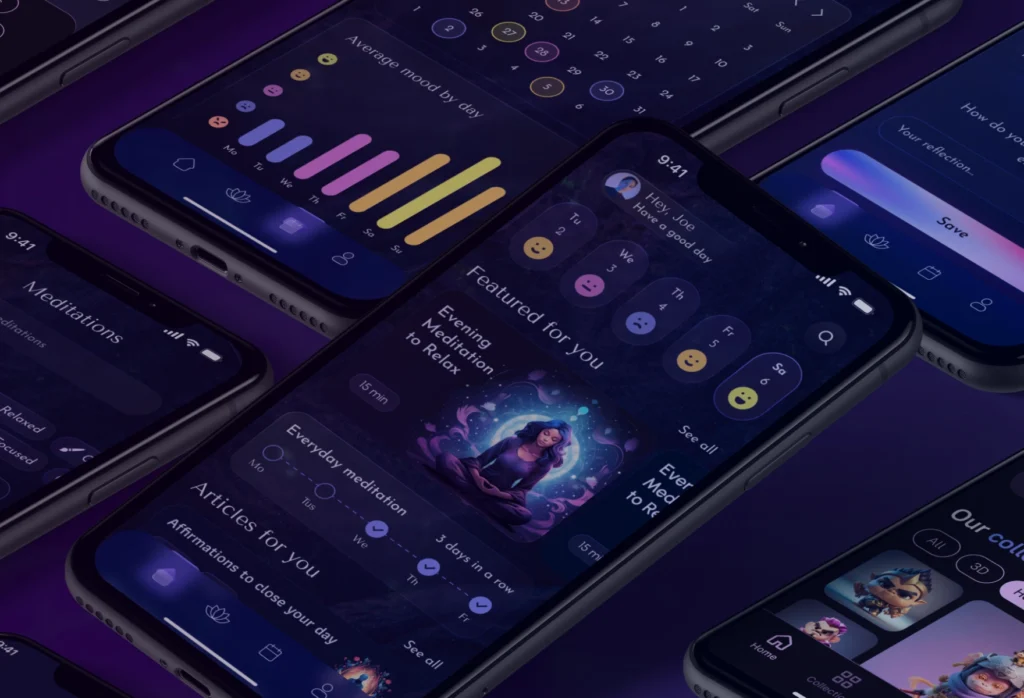December 29, 2021
How to Create an App for iOS & Android Using Blockchain?
Table of content
- How to Create an App for iOS & Android using blockchain?
- What is blockchain technology, and how does it work?
- What dApps mean, and how do they relate to smart contracts?
- What spheres use blockchain?
- What are the benefits of blockchain implementation?
- How to develop blockchain from scratch?
- The bottom Line
- FAQs
Although blockchain technology has been here a long time, decentralized applications, also known as dApps, have gained immense popularity in recent years. Considering that worldwide spending on blockchain solutions is suggested to reach 19 billion U.S. dollars by 2024, the key driver for such popularity became COVID-19 and the implementation of new technologies in the I.T. industry. Although, first of all, this technology has been applied only for the financial sector, during 2021, dApps reached almost all industries, from agriculture to healthcare.
Representing a distributed database that shares information within the computer network nodes, blockchain digital solutions allow to set up private, secured, public, and consortium-based environments and help every company provide their own applications and solutions. As a result, all companies may have products, apps, and services to work smoothly across the blockchain network, cloud providers, and various organizations.
Even though there are numerous resources on the internet, it is still pretty tricky to craft dApps from scratch. This is why we have crafted this simple guide for anyone interested in implementing technology into the business and easily entering the industry with billion revenue. We’ll show everything you need to know about this space, what languages are used to build dApps, and explain all needed steps to build decentralized applications.
What is blockchain technology, and how does it work?
Before we get into blockchain development, let’s first understand the basic principles of this technology. It represents a decentralized system of recording data in a way that will be difficult or, sometimes, impossible to change, meaning it is secured and protected from hackers. Consisting of a vast chain of blocks containing a particular number of transactions, the system records it and adds it to every participant’s ledger whenever a new transaction appears.

What dApps mean, and how do they relate to smart contracts?
dApps are decentralized applications, so they are just regular apps with a different structure. The primary difference between these solutions is the back-end side of the development. Since dApps are meant to be connected to a digital ledger, their back-end needs to be prepared for decentralized protocols. The most well-known networks are peer-to-peer (P2P) and smart contracts, which help them to provide functionality without the need for an intermediary.
Smart contracts are algorithms that automate the executions of agreements between all parties in this digital ledger. For instance, Ethereum is now the most well-known among all of them, but since the market is vast, there are many alternatives out there.
Decentralized applications can be broken into the following categories:
Type 1
Those who have their own blockchain system, for instance, Bitcoin. Other apps with alternative cryptocurrencies, such as Ethereum, XRP, and Tether containing their technology, also fall under this umbrella.
Type 2
These require tokens for their functioning. The Omni Protocol is considered the brightest example of the second type of apps. It is a distributed trading platform crafted on top of the blockchain as a ‘layer’ to cover the exchange of tokens or value between parties without involving third parties.
Type 3
The third type applies the protocol of the apps of the second type. The SAFE Network (Secure Access for Everyone) can be a great example of this type. It represents a decentralized data storage and communications network that eliminates the need for data centers and servers. Being an autonomous network, the third type helps to create censorship-resistant websites and apps.
See Our NFT & Blockchain Development Process
Download this file to see how we helped our NFT clients, how we can lead you to success and what process we use to achieve this

What spheres use blockchain?
Healthcare
Distributed Ledger Technology (DLT) is widely used in pharmaceutical supply to guarantee the origin of medicines. Blockchain applications and platforms can be used by medical providers and regulators alike to provide transparent relations without fraud. Since over 67% of U.S. firms run healthcare, telemedicine, and mHealth apps establish free access to any medicine supply, digital ledger technology is the easiest, most secure, and convenient one to provide such an opportunity. Its implementation into the distribution process at the medicine market seems to increase safety and decrease costs of regulations compliance.

Real Estate
Blockchain’s protected system makes it an excellent technology for real estate. These companies are now using smart contracts that are highly transparent and efficient to facilitate renting, purchasing, investing, and even lending. Since real estate companies, agents, clients, and industries face hackers attacks every day, a digital ledger network is applied to ensure security over vulnerable transactions from the first steps till the procession of the transaction. This, in turn, helps reduce the thrives, money lost and save time.
Education
Since academic transcripts are considered time-consuming, the digital ledger can significantly improve labor-intensive tasks in educational institutions today. In addition, issuing verified student’s grades, all entries have to be manually checked to ensure accuracy. This technology gives students access to ownership of their personal records, providing them with control of their academic identity. This helps significantly ease the process of job hunting because students have higher control over what an employer can access.

Social Media
With the demand on social media platforms like Twitter, Instagram, Tinder, and more, hackers are always here to steal personal information. This is where blockchain-based social media apps can be a saver. Since the technology ensures security and protection of data, users can feel safe using apps.
What are the benefits of blockchain implementation?
Higher Transparency
One of the most well-known benefits of this technology is that its transactions can be freely viewed. In terms of financial systems and businesses, this helps add an unprecedented layer of accountability, keeping all business sectors responsible for acting with integrity to provide the company’s growth, support its community and protect customers.
Enhanced Efficiency
Thanks to its decentralized nature, digital ledger reduces the need for third parties in various processes in spheres, including payments and real estate. In contrast to traditional financial services, distributed ledger provides faster and easing transactions by providing P2P cross-border transfers using a digital currency.
Improved Security
Comparing this ledger to other record-keeping systems has increased security as every transaction is encrypted and relates to the previous transaction. Being a network of computers creating blocks, each is then added to a ledger, providing a working ‘chain.’ This ensures nothing can be replaced, altered, or stolen.
How to develop blockchain from scratch?
Step 1: Identify your idea and concept
Like with any other project, the first step should always be creating the main idea and concept. Think about it before the beginning of developing your future app. You need to understand the problems your app is going to solve with the product and start formalizing the concept. Here you will also need to understand on what platform (iOS or Android) your app will work.
Step 2: Perform competitor research
The second step is performing research to analyze the existing market and identify what solutions are in demand and what this industry lacks. Since the market is new and far from saturated, any business can easily find the best niche or will find out how to create the same job better than competitors.

Step 3: Analyze your options
There are three ways for companies to build the DApp from the technical standpoint:
- Integrate an open blockchain like Ethereum or Bitcoin into your mobile solution.
- Build your private network on the available blockchain software.
- Craft your own network on the most suitable platform for you and from scratch.
Step 4: Choose a platform
- Ethereum is today’s most popular platform that allows companies to develop an application while creating an ecosystem using the language Solidity.
- Hyperledger is great for those who need a corporate tool for exchanging data within the business. To build these apps, developers use hyperledger with a team of Go, Java, and JavaScript engineers.
- Ripple would be an excellent option for anyone planning to provide a financial tool. This allows users to easily send money anywhere across the globe while also connecting banks and payment providers.
This stage of development is essential as it helps you identify the technology stack and required resources for the future project. Although many popular platforms for dApps can be built on C++, Java, Kotlin, and JavaScript, some have their own unique languages, including Solidity and Simplicity.
Step 5: Design Creation
Since dApps are still applications that will be used by people worldwide, the design will be your visit card. You have to ensure the team you choose is professional and has already worked with this technology because the design has to be simple, relevant, and efficient.

Step 6: Development
At this step, you need to create a front-end side of the app that will look just like any other application. However, the back-end should always be decentralized. This is why you will need a highly-experienced team of developers who have already worked with the most complex languages and your needed protocols.
Step 7: Test Rigorously
Like with any other project, it is always recommended to start testing your project as early as possible during development. Every added feature and block has to undergo a thorough Q.A. testing.
Even though testing front-end apps is a quite standard procedure that can be performed by middle Q.A.s, the process of testing smart contracts is unique. This is because you have to use a test to ensure its functionality.
Keep in mind that when your smart contract is on platforms like Ethereum, you won’t have an opportunity to modify it. Therefore, any bugs and mistakes your QA team missed will remain intact.
Step 8: Deployment and Maintenance
As a final step of the whole process, you need to deploy your dApp. This means uploading mobile apps to the Google Store and Apple Play, making the portal a live production environment, and adding a smart contract to the blockchain.
The bottom line
With the significant interest in blockchain within the last year, many companies started to invest in these digital solutions. However, the industry is challenging and complex; not everyone is able to provide a well-thought-out app that will help improve the world with the newest technologies. This is why we set up this guide for companies who consider development of dApps and don’t know how to start.
Even though you can hire developers one by one, it could be a time-consuming process and take a lot of money. So it is always better to hire a full team that provides you with a business analyst and project manager alongside all needed teams for success. This will not only save your time and money but also ensure your satisfaction and understanding of each step of the development. With in-depth experience in blockchain app development services and NFT development services, Interexy is always here to provide clients with only the best team for their project. And if you still have questions and are not aware of where to find developers with a high level of expertise, contact our experts and let us help you overcome all competitors!
FAQs
How much does it cost to develop a blockchain app?
Just like with any other app, it depends on numerous factors, including timelines, a number of features, chosen industry, complexity, and resources required. This is why there is no simple answer to this question. However, the minimum price starts from $50.000.
How to find a reliable blockchain development team?
If you decide to hire a whole team, you can significantly benefit from the decision, as it is much easier and quicker to find it than developers one by one. When looking, you have to ensure the company has relevant experience (check case studies), learn coding standards, identify what protocols the team knows and operates, and finally check the design ( as it is also vital).
How long does it take to develop a dApp?
Just like with the price, the answer depends on many factors. However, as our practice shows, the minimum time needed for such apps is 3-4 months with the team of developers and designers of senior level.
On what platform is it better to develop a dApp?
As we mentioned earlier in the article, the best platform for blockchain app development is Ethereum. This smart contract will be suitable for all companies looking for efficiency and transparency.














